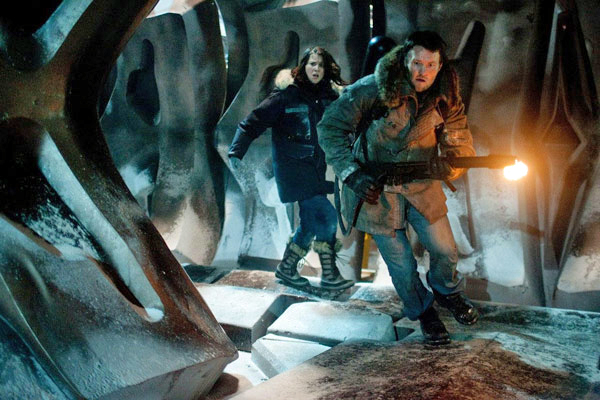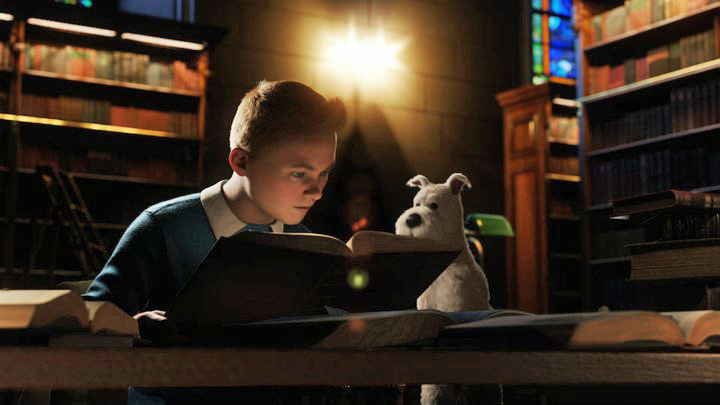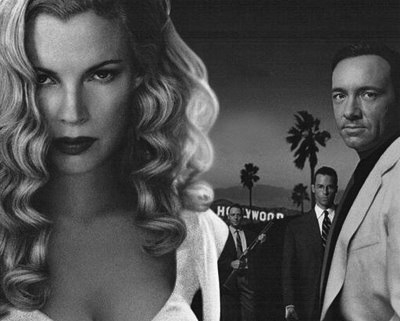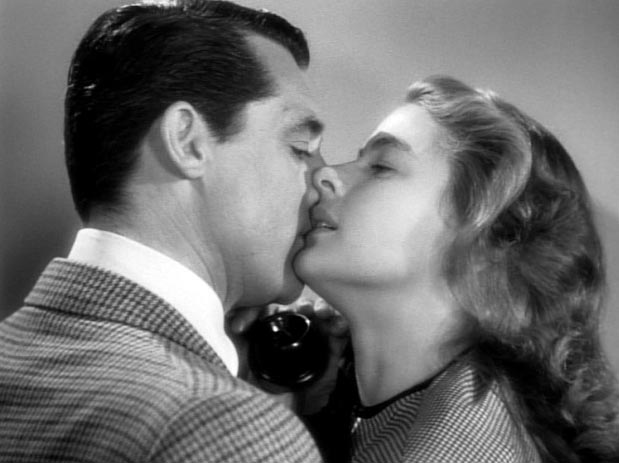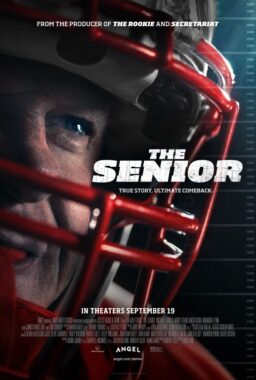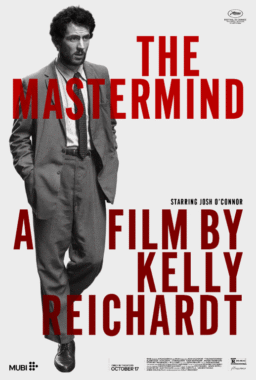Q. Has David Cronenberg’s controversial “Crash (1997)” been censored for its current release on video? That’s what I heard. (Charlie Smith, Chicago)
A. Only at Blockbuster stores. The film, about a very literal form of auto-eroticism, was rated NC-17 when it was released, and Blockbuster won’t handle movies with that rating. So Fine Line Pictures put a clause in Cronenberg’s contract requiring him to deliver a “Blockbuster cut” for home video. All other video stores will carry the uncut version. Of the Blockbuster version, Cronenberg cheerfully told Wired News: “It’ll probably run about an hour and make no sense at all.”
Q. OK, for once and for all: In “Boogie Nights,” the last shot shows Mark Wahlberg displaying the full monty. Is that really him, or only a prop? (Ronnie Barzell, Los Angeles)
A. I don’t know. And it’s not for lack of asking. The generally accepted opinion is that we are looking at a prosthesis; that’s the verdict in most of the articles about the film – and what Mark Wahlberg himself has said. But “Boogie Nights” director Paul Thomas Anderson swore it is absolutely, positively Mark Wahlberg’s own precious bodily part we are gazing upon. Anderson was sitting on my back deck and drinking my iced coffee and looking me straight in the eye when he said, “That is Mark Wahlberg’s penis.” Not a special effect? “No.” Not a double who is substituted in the shot? “No.” My own opinion? It’s a prosthesis.
Q. I know a cinematographer who was asked to work for a guy who was trying to raise money for an IMAX porn movie. Your thoughts? (Paul Idol, Scarsdale, NY)
A. I think I’d be distracted by the sound. With those 60 surround speakers, it would probably sound like being trapped inside a washing machine.
Q. Lightly sidestepping the reason why I went to see “Speed 2: Cruise Control,” there was one part that really surprised me. During the final explosion on board that oil tanker, I was certain that, on the right hand side of the screen, one of the bits of debris was distinctly cow-shaped. In fact, it looked suspiciously like the flying “Twister” cow. Is this true and just an in-joke, or were my eyes trying to bring some excitement to a dull film? (Julian Callinan, Melbourne, Australia)
A. Congratulations on apparently being the first person to spot this in-joke inserted by the special effects wizards. Glenn Salloum, associate producer of “Speed 2,” replies: “You have it right! The effects company of Rhythm and Hues added the cow into the second shot of the explosion as an homage to Jan de Bont and ILM’s work on ‘Twister.’ ‘Twister’s’ cow received so much attention that we thought it would be fun to keep the flying cow thing going in ‘Speed 2.’ It happens so fast and there really isn’t a full shot so only a really keen eye will see it on the first or even second pass. You’ll be happy to know, no cows were harmed in the making of ‘Speed 2’.”
Q. In your review of “The Edge,” you refer to the Escaping Wallendas. Don’t you know the act is known as the Flying Wallendas? (Baxter Wolfe, Arlington Heights)
A. I do. That was a joke.
Q. I always hate it when a movie plot goes into auto-pilot. Therefore, inspired by your review of “Peacemaker,” I would like to offer my comments about two cliches: RDR (Red Digital Readout) and its companion WCW (Which Color Wire?). A movie hero defusing a bomb always tries to guess the color-mnemonics of the builder. As a former electronics technician, if I was faced by this situation, I would simply look for the battery, make sure it was the only one, and cut ITS leads. (Steven Stine, Buffalo Grove, IL)
A. Why didn’t Harrison Ford think of that in “Air Force One?” And Keanu Reeves in “Speed?” And Nicole Kidman in “Peacemaker?” Think of the screen time that could have been saved.
Q. Do you think food at the movies is different from food elsewhere? Like broken cookies (the calories all fall out) and samples in stores, food at the movies has no sense of being fattening. (Rebecca Costello, Ithica, N.Y.)
A. And besides, you work it all off during the chase scenes.
Q. I saw “The Full Monty,” and while I ultimately thoroughly enjoyed it, I doubt that I actually understood more than five percent of the working-class dialogue–though I was able to follow the basic story, of course. There were sometimes periods of many minutes where they could just as well have turned off the sound. I can understand sentences that contain no vocalized consonants when they are spoken slowly, but no’ a’ the brea’ne’ cli’ tha’ were oft’ th’ case in thi’ fil’. A few people in the theater seemed to do much better, but I think a lot of people in theaters must laugh just because everyone else laughs. I think the film needs subtitles. (Ira D. Flax, San Francisco)
A. “The Full Monty” is the season’s top art-house hit, and yet I’m sure a lot of audience members share your feelings. I had no difficulty with the dialogue because I’ve grown accustomed to British accents over the years, but it’s true that there’s an enormous difference between English as spoken by Lawrence of Arabia and by unemployed steelworkers in Sheffield. Subtitles would be a distraction, though. It’s not the words, it’s the music, and most of the time I think we catch the drift even if a word eludes us. It’s a two-way street; I imagine they had trouble understanding “Deliverance” in Sheffield.
Q. We’ve seen a summer full of “CNN Reports” in fictional movies, and just as much controversy (mostly in news circles) over the use of real CNN anchors. Them-there “serious” news folk seem to think using the real call letters in films destroys their credibility. Gimme a break. I, for one, have a problem seeing fictitious call letters like “CMN” when everyone knows damn well what the movie producers are getting at. I don’t see it as product placement (though in some cases, like Fox, I know they ain’t puttin’ NBC up there); I see it as realistic. Apparently, CNN buckled to peer pressure and decided “no more cameos in the movies.” But the new film “Kiss the Girls,” appeared to use real local TV stations in the Raleigh-Durham area, and I was glad to see that. What’s your feeling about using real news reporters in film? (Bruce Maiman, Monterey, CA)
A. Phony call letters, like phony brand names, are always a distraction. But real ones blur the line between news and entertainment. One compromise is to use retired but recognizable newsmen, like Edwin Newman, and put them on a realistic set but not identify it.
Q. Where’d the word “trailers” come from? They don’t follow (or “trail”) the movie. Did they, at one time? Is that where the word came from? If not there, then from where? (Binky Melnik, New York City)
A. David J. Bondelevitch, of the CompuServe Showbiz Forum, replies: “Trailers were the LAST thing to play before the movie. In the past, the feature “was preceded by numerous shorts (newsreels, cartoons, other short subjects). The trailer was the LAST THING on that reel, hence it “trailed” everything else. Then the projectionist switched reels to the feature.”

